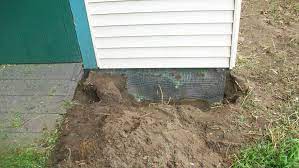Introduction: Rat infestations can pose serious challenges for homeowners, leading to property damage and potential health risks. One effective preventive measure gaining popularity is the installation of a “rat wall.” In this comprehensive guide, we will explore the concept of a rat wall, its purpose, installation methods, and how it can safeguard your home from these unwanted intruders.
Understanding the Need for a Rat Wall:
A rat wall, also known as a rodent barrier or rat guard, serves as a protective barrier against rodents attempting to enter homes. Rats are adept climbers and can find entry points through gaps, vents, or weak spots in the foundation. A rat wall acts as a deterrent, preventing these pests from accessing your home.
Materials for Rat Walls:
Rat walls are typically constructed using materials that rats cannot easily chew through or climb. Common materials include:
- Galvanized Steel Mesh: A durable and corrosion-resistant material that effectively blocks rat access while allowing for proper ventilation.
- Concrete or Metal Flashing: Applied at the base of the exterior walls, these materials create a smooth and slippery surface that rats find challenging to climb.
- Hardware Cloth: A sturdy wire mesh with small openings, hardware cloth is an effective barrier against rodent intrusion.
Installation Process:
Installing a rat wall involves careful planning and attention to detail. Follow these steps for a successful installation:
- Identify Entry Points: Inspect the exterior of your home for potential rat entry points, including gaps around pipes, vents, and utility lines.
- Clear Debris: Remove any debris or vegetation around the perimeter of your home, as rats can use these as pathways to access the structure.
- Install Mesh Barriers: Secure galvanized steel mesh or hardware cloth around the base of your home, covering vulnerable entry points. Ensure a secure fit to prevent rats from squeezing through gaps.
- Apply Flashing or Sealant: Use concrete or metal flashing along the base of the walls to create a slippery surface, making it difficult for rats to climb.
- Regular Maintenance: Periodically inspect and maintain the rat walls to ensure its effectiveness. Replace any damaged or compromised sections promptly.
Advantages of Rat Walls:
Installing a rat wall offers several benefits, including:
- Preventing Infestations: A well-installed rat wall serves as an effective barrier, reducing the likelihood of rat infestations in your home.
- Protecting Property: Rats can cause structural damage by gnawing on wood, insulation, and electrical wires. A rat wall helps safeguard your property from these destructive behaviors.
- Health Protection: Rats can carry diseases and pose health risks to humans and pets. By preventing their entry, a rat walls contributes to a healthier living environment.
Considerations and Challenges:
While rat walls are effective, it’s essential to consider factors such as landscaping, water drainage, and structural design. Consulting with a pest control professional can help address specific challenges and ensure a comprehensive rat prevention strategy.
Conclusion:
A rat wall is a proactive and effective solution to protect your home from potential rat infestations. By understanding its purpose, choosing suitable materials, and following proper installation procedures, you can create a robust barrier that deters rats and contributes to a pest-free living environment. Regular maintenance and periodic inspections will help ensure the ongoing effectiveness of your rat wall, providing peace of mind for you and your family.

